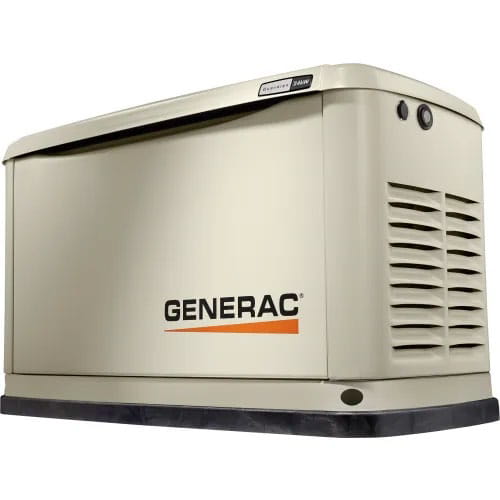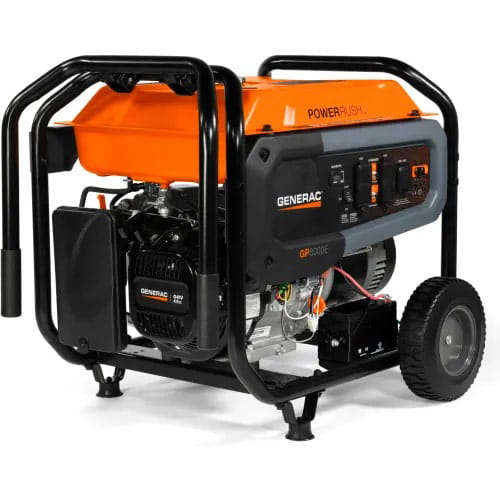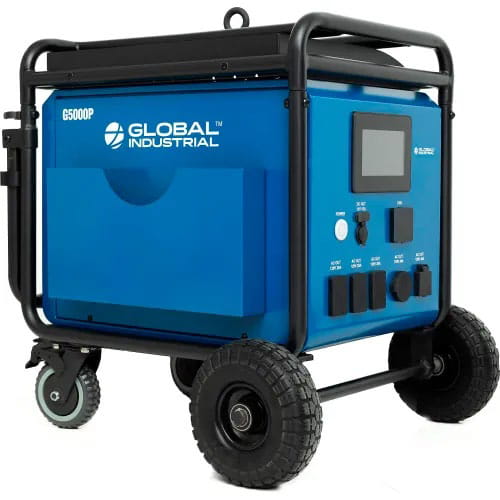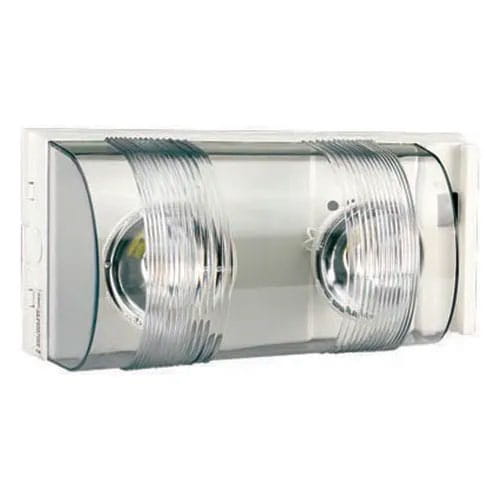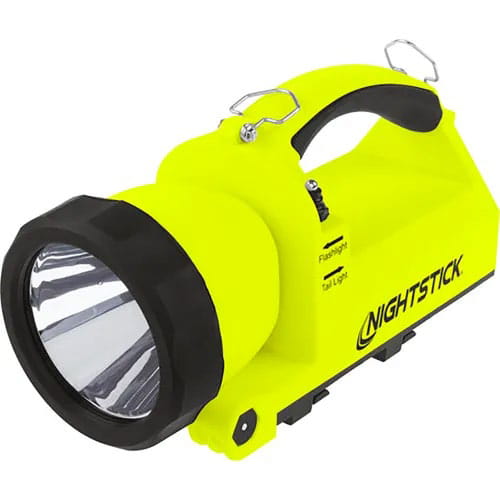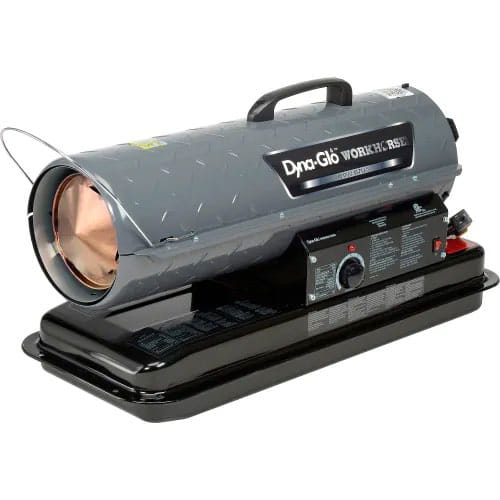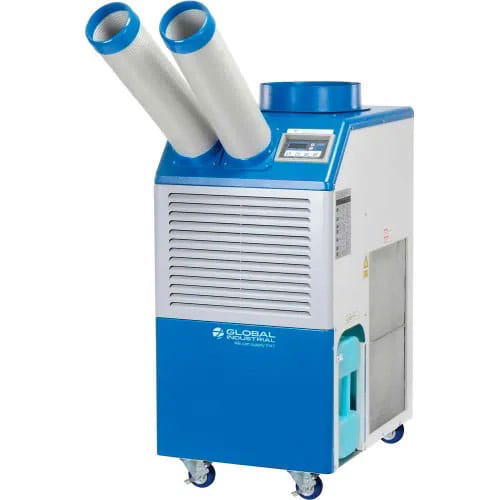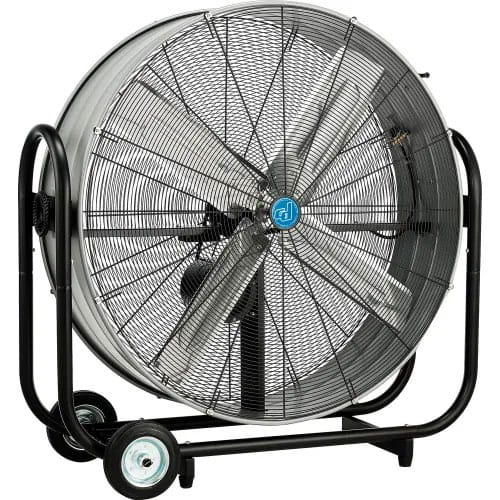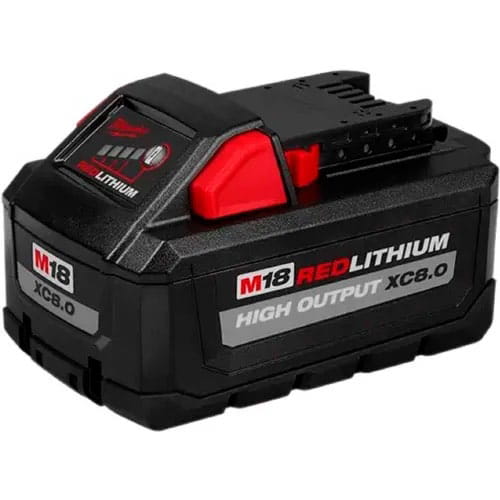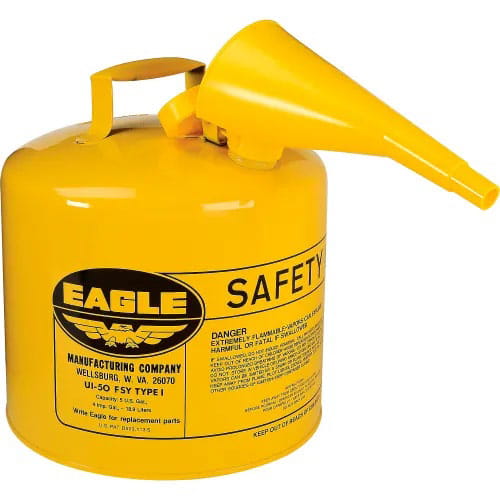Power outages are a reality we all face nowadays. Whether they’re caused by extreme weather, accidents, or rolling blackouts, they can suddenly throw a wrench into our plans, affecting businesses and safety. Sadly, it’s not a case of “if” but “when” you’re going to be impacted by a power outage, and even then, you have no idea how long you’re going to go without juice. And that’s why preparing for a power outage sooner rather than later is the best way to keep your business running, and your employees safe.
Let’s Look at the Facts….
Not only are power outages becoming more frequent, they're also lasting longer. In some cases, a lot longer. The U.S. Energy Information Administration (EIA) states that the average duration of a power outage in the U.S. doubled from around 3.5 hours to over seven hours from the years 2013 to 2021. What’s more, we’ve also seen a slight uptick in the number of outages per customer each year, going from 1.2 to 1.42 events per year. In short, today you’re not only more likely to have a power outage than in previous years, but you’re also going to feel its impact for much longer. As we all know, time is money; a whole day without production or providing service can have a significant knock-on effect that could take days, weeks, or even months to recover from fully.
When can you expect to be hit by power outages? Well, contrary to what you may think, the winter months aren’t usually the issue. Electricity companies report that most outages happen between April and August for the following reasons:
- Equipment overheating: Extreme heat can cause equipment to overheat.
- Sagging power lines: The metal in power lines expands as it gets hotter, causing them to sag and potentially touch trees, causing outages.
- Lower transmission line capacity: High temperatures can cause transmission lines to have a lower capacity.
- Reduced equipment efficiency: Heat can make equipment less efficient, causing more power to be lost in the transmission process.
So, now you know just what you’re up against, let’s look at what you can do now, and the essential equipment you’ll need, to handle your next power outage like a pro.
Formulating a Plan for Success
Being fully prepared for power outages requires a thorough plan. This roadmap/checklist has been created to enable you to handle any disruptions from power companies that come your way, and it comes in four main parts:
1: Prepare Your Staff
The chaos of a power outage is not the time to rally the troops and tell them what to do. People will be panicked, especially if it happens at night or in a building without windows, and you and your employees will not be thinking clearly if there’s no plan in place. Everyone needs to know exactly what to do should the power go out, and that requires regular drills and meetings to ensure everyone understands their role in the emergency. Familiarize everyone with emergency equipment (we’ll get to that in a second) and signage in your facility, and instill a culture of readiness.
2: Stay Informed and Updated
Knowing when to expect a power outage helps significantly. Your local power and electricity companies should inform you if there is a power outage coming due to maintenance or other controllable events, but even if it comes out of the blue, they can offer real-time updates on power restoration timelines; however, you MUST sign up for these alerts. Enroll in email and text alerts from your electricity provider to stay ahead of the game.
3: Create a Checklist
A detailed checklist that all employees have access to serves as an essential guide during a power failure. As mentioned earlier, people may not be thinking clearly, so having a list to follow makes everyone’s lives easier and safer. The list should be specific to your business and your facility, but Ready.gov does provide an excellent power outage checklist as a starting point.
4: Pre-install Equipment
Again, being fully prepped for a power outage requires you to take action now, not when it’s happening. Safety necessities like emergency lighting and signage are essential. You should also implement something called an Uninterruptible Power Supply (UPS) system. This is designed to offer hours of power to any connected equipment in your facility, filling the void between a power outage and the resumption of regular power.
Essential Power Outage Equipment and Supplies
Preparing for a power outage involves more than devising a plan; it also requires equipping your facility with the necessary supplies and equipment. This includes reliable portable generators, adequate lighting, and temperature regulation, each playing a critical role in ensuring operational continuity and safety during an outage. Let's examine these supplies in greater detail and their importance.
Generators: Standby and Portable
A backup generator can literally be a lifesaver during power outages. These crucial machines provide electricity when the main power supply fails, keeping your operations running. Standby generators, installed permanently, offer high power capacity and automatically start during an outage.
Conversely, a portable power generator offers flexibility, can be moved around as needed, and comes in various types such as gas, propane-powered, portable generators, power stations, and towable generators. You may need a strategic mix of these to meet all your requirements. And if you’re not familiar with a portable power station, they are powered by LiFePO4 lithium-ion batteries. They offer greater stability than regular lithium-ion batteries and provide a longer lifespan. This makes them well-suited for use in high drain applications and industrial energy storage systems. Environmentally friendly with less noise and pollution, they are ideal to power a industrial portable rechargeable generator.
Lighting
Navigating your facility during a power outage without adequate lighting is not only difficult but very dangerous. Flashlights are essential, especially in areas that become unusable in the absence of light. They come in various forms, including battery-powered, rechargeable, work lights, spotlights, and inspection lights.
Emergency lighting also plays a crucial role in maintaining safety and continuity of operations during power outages. Strategically placed emergency lighting systems and signage can guide people to safety during outages, and systems typically include exit signs, wall-mounted lights, and ceiling fixtures.
Heating, Air conditioning, and Fans
During power outages, your facility can be exposed to a variety of outside temperatures and fluctuations, some extreme, that can affect the safety of employees and the operation of equipment. To help prevent damage to sensitive equipment, and climate-controlled spaces, as well as safeguarding workers, have a plan in place for portable heating and cooling, along with temporary back-up power.
Batteries and Fuel
A sufficient supply of batteries and fuel, as well as safe storage for fuel, is vital for powering your equipment during an outage. This includes:
- Gas and Propane Containers (this essential Safety Cans Buying Guide has all you need to know to choose the right ones for your business)
- Ventilated Cabinets to store fuel and other flammable liquids
- A Fuel Storage Tank
- Batteries of every size, both rechargeable and disposable
In various settings, including healthcare facilities, as well as offices, data centers, and manufacturing plants, an Uninterruptible Power Supply (UPS) system is indispensable. It offers reliable backup power for crucial equipment, ensuring uninterrupted operations during power outages. For larger equipment and entire facilities, standby generators (as referenced above) can provide additional support, enabling seamless continuity during a power grid failure.
Patient Transport at Healthcare Facilities
Power outages necessitate careful planning for patient transport. Battery-operated equipment like wheelchairs and stretchers offer mobility independent of the main power supply, facilitating safe and efficient transportation of patients, especially those reliant on machines or in critical care.
Safety Supplies For Power Outages
After all the equipment preparation and installation is complete, you still need to address one more area: safety supplies.
- Keep first aid kits, survival kits, and Personal Protective Equipment (PPE) fully stocked and within reach. Battery-powered two-way radios can ensure easier coordination with your staff.
- Fill an easily accessible cabinet with flashlights and portable emergency lights to make sure everyone can see where they’re going, and avoid potential tripping hazards and falls.
- If flooding occurs, make sure waterproof boots, jackets, and gloves are at hand.
- You should, of course, always have bottled or canned water available for drinking.
- Spill kits are also a good idea to have on standby.
Remember, a power outage will hit your facility at some point. It could be next year or next week, so follow this advice and you’ll be as ready as you’ll ever be when the power stops flowing. And if you’d like to talk to someone about your power outage prep, or need any help or advice on selecting the right equipment and supplies, our experts are here to help.
